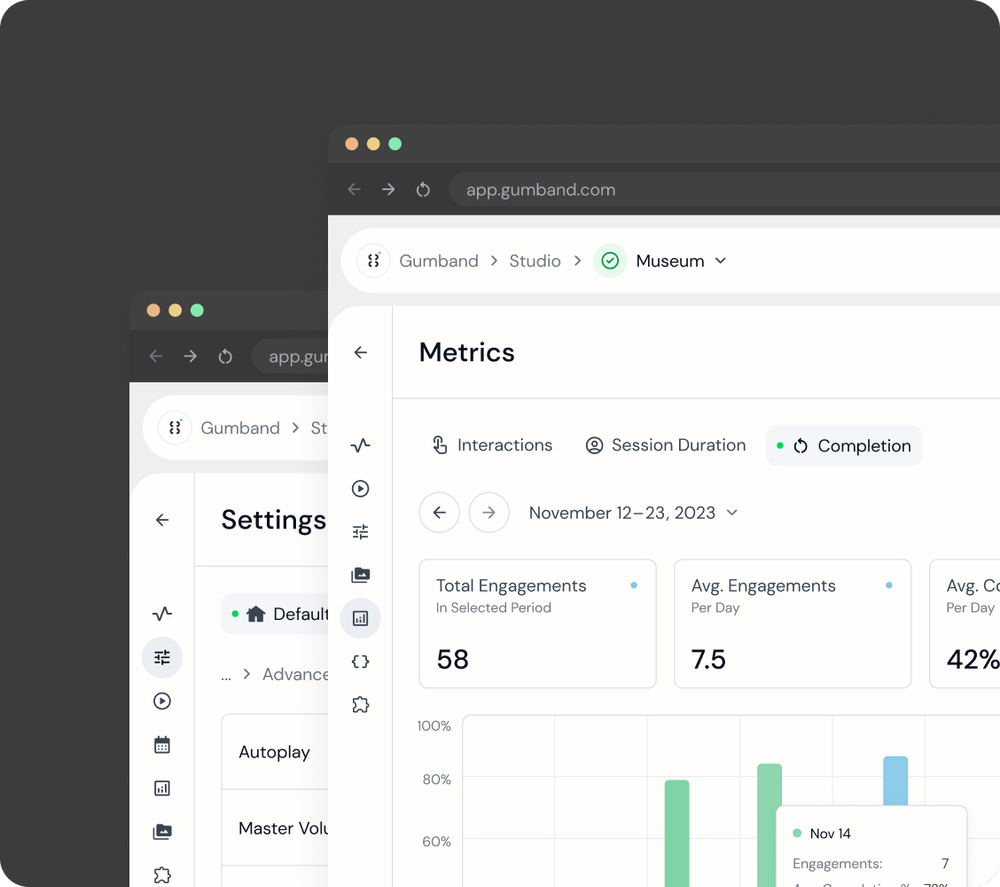A service-based CMS for experiential teams
Gumband
Experiential Content Management Systems

Status
Paused
Company
Deeplocal
Duration
15 Months
Role
Full-Stack Software Engineer
Problem
Experiential agencies tend to invest as little as they can into their content management systems, either because they have to out of business necessity, or because they don't understand that their CMS is part of the experience. With Gumband, we wanted to deliver a solution that end users, software engineers, and high-level stakeholders all loved to use.
My role
- Served as full-stack software engineer for the Gumband project
- In the last three months before company-wide layoffs affected our team, I had been working under Chief Technical Officer on what would have been a Technical Product Manager role
My Contributions
- Full-stack engineering on the core platform
- Prototyped, pitched, and got stakeholder approval on a novel TouchDesigner integration that would have made building no-code Gumband-integrated apps a reality for the first time
- Worked with principal software engineer to develop patterns that drastically reduced our technical debt and introduced new modularity patterns into our projects
- Introduced fix into our front-end service that completely eliminated git merge issues that we were constantly running into with our icon system
- Leaned on years of experiential tech experience to work with product team on delivering features tailored to our clients needs
How it ended
We delivered a dependable, well-liked system that pushed beyond a typical experiential CMS. After company changes paused the team, the work still reignited my love for experience management.
Notes
This taught me the value of all of your interfaces, and in an app like Gumband where we're trying to help platform users and software developers, both users are just as important. You've got to meet developers where they are, not get them to adapt to you.
Impact
Exploring an experiential CMS or ops tooling? Happy to talk through options.
Start a conversation